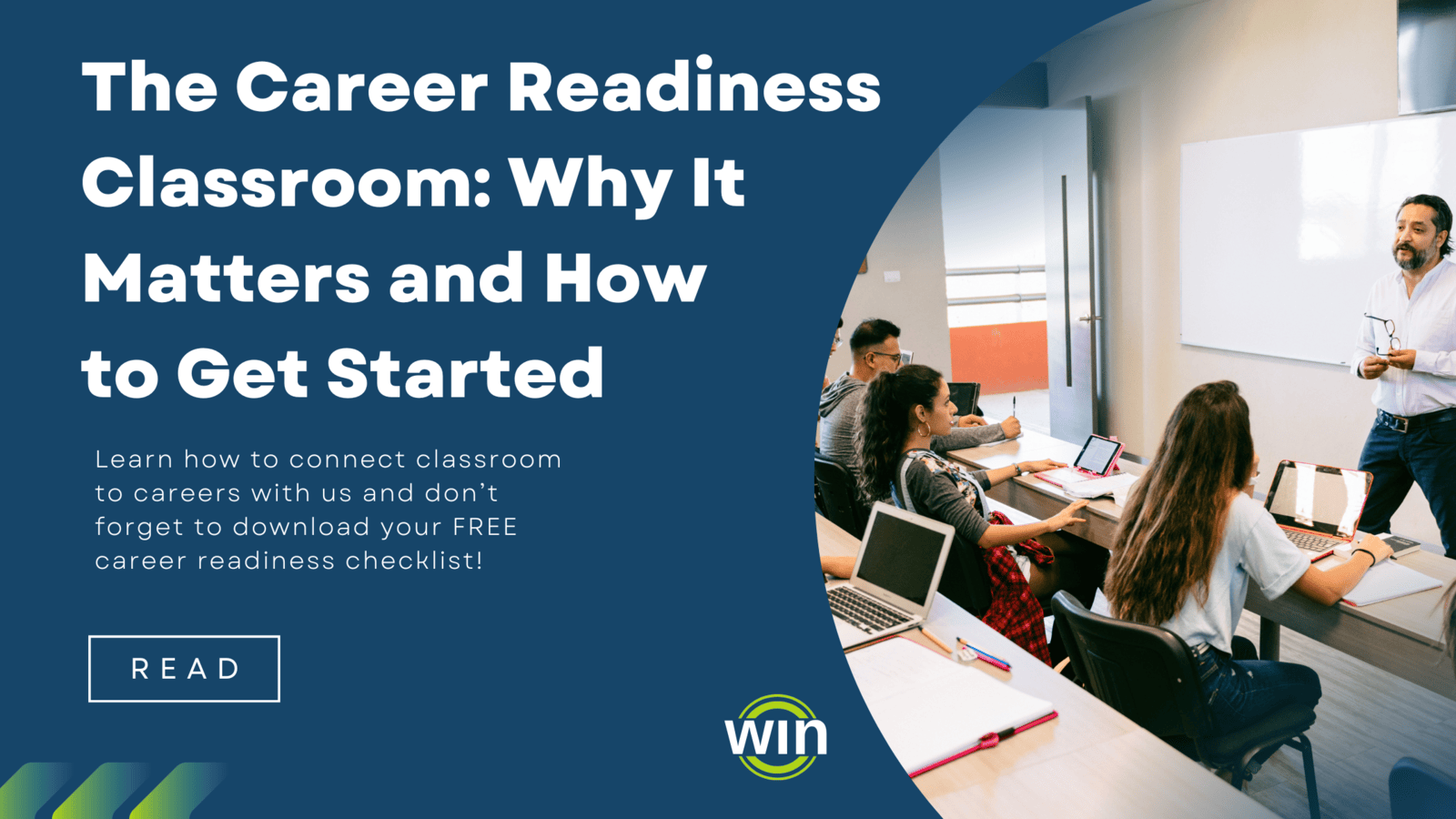
As educators, one of the greatest gifts we can give our students is the confidence and competence to navigate their futures. Career readiness equips students with the skills they need to succeed in the workplace and beyond. But what does it take to build career skills in the classroom? Here’s a practical guide to help you set the stage for empowering your students to set out on their career pathways.
Why Career Readiness Matters
The workplace is changing rapidly, and so are the skills students need to thrive. Employers are looking for candidates who can adapt, solve problems, collaborate, and communicate effectively. Additionally, digital literacy and foundational academic skills remain critical in nearly every career field.
Teaching these skills early not only prepares students for professional success but also helps them develop confidence, independence, and a sense of purpose. By integrating career readiness into your classroom, you’re helping them bridge the gap between education and employment, between classroom and career.
Key Career Skills to Focus On
- Practical, applied mathematics skills
- Reading comprehension skills
- Basic data analysis and research skills
- Communicating effectively
- Conveying professionalism
- Promoting teamwork and collaborating
- Critical thinking and problem solving
- Operating computers and mobile devices
- Internet searching and evaluating online information
- Communicating and collaborating virtually
- Creating and sharing digital documents
- Understanding digital security and online privacy
How to Get Started
Implementing career readiness doesn’t have to be overwhelming. Here are a few practical strategies to help you get started in your own classroom, regardless of age or grade level of your students:
Start Small
Introduce one skill at a time, especially with younger students. For example, if you’re working on communication skills, begin with teaching students how to write professional emails before moving to more complex or abstract topics like resolving conflicts. Many of the career readiness domains complement each other, so if you want to introduce multiple skills in the same lesson for more advanced learners, choose a skill from each domain. Using the example of writing a professional email, consider having students read an email, search the internet for a credible answer, and construct a professional reply. This activity builds on the academic skills of reading and writing as well as the soft skill of communication and the digital skill of searching the internet and evaluating media sources.Use Real-World Examples
Bring lessons to life by showing how the skills you’re building are used in various jobs. For instance, use a project-based learning activity to demonstrate teamwork, since most collaboration in the workplace revolves around team project completion. Alternatively, have students gather or interpret data from real-life scenarios, graphs, or charts about their industry of interest or local businesses. For example, have students collect a short survey from entrepreneurs in your county and ask a few interview questions about each person’s career path, and then analyze the results together.Incorporate Career Exploration
Help students discover their interests by exploring different career fields. Our courses have been intentionally designed to demonstrate skills across all industry clusters and job zones, as designated on the O*NET Occupations Database, which is a free resource that can be used with high school students and adult learners to explore careers and their related job tasks. Use career quizzes like we make available in our myWorkReady platform or invite guest speakers from diverse industries to meet with your students virtually through platforms like Pathful Connect.Make It Interactive
Engage students with offline projects, role-playing activities, and digital tools that simulate workplace tasks. Role-playing is one of the most effective ways to learn most soft skills, and you can have a lot of fun at the same time. You can also demonstrate how a lack of skills can negatively impact any job. For instance, divide students into groups and have them complete some kind of quick or timed project, like assembling a toy. Then repeat a similar assembly project, but this time have each group assign a leader. Afterwards discuss the role of leadership in project management.
Conclusion
Career readiness is more than just preparing students for jobs; it’s about equipping them with skills for life. By weaving these concepts into your classroom, you’re giving your students the tools they need to succeed in a dynamic world. Let’s make this the year of career readiness!
Free Resource: Career Skills Checklist for Educators
To help you hit the ground running, we’ve created a Career Readiness Checklist for Educators that you can use in your classroom as a one-stop reminder for the most important career skills to weave into your work. This printable resource includes:
- Essential academic skills to integrate into lessons,
- Soft skills and activities to build them, and
- Key digital skills students should master.
To download your checklist and browse our other free resources, visit the WIN Learning Library by subscribing below!
